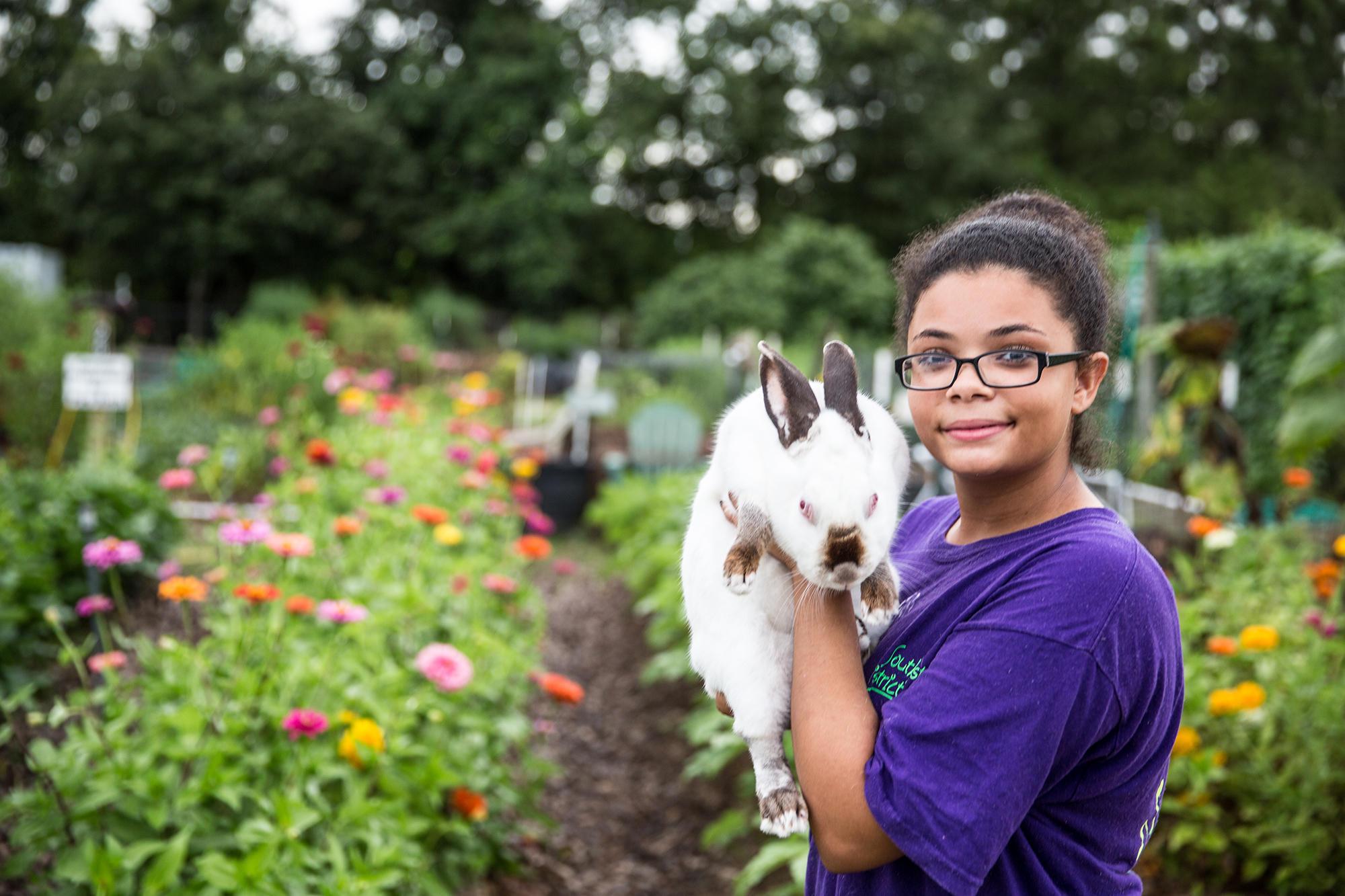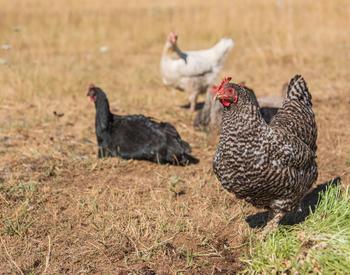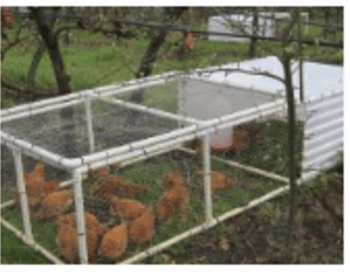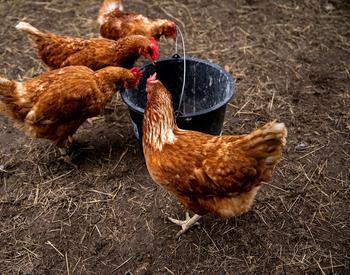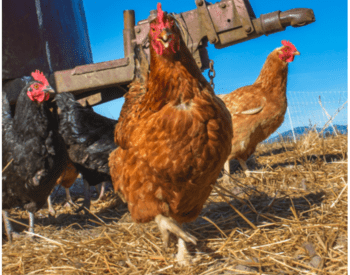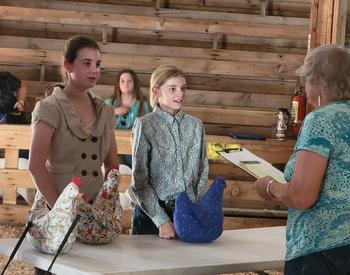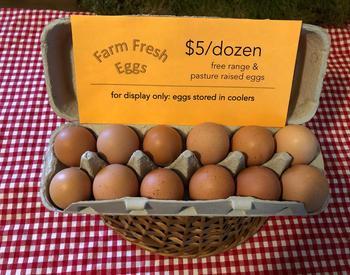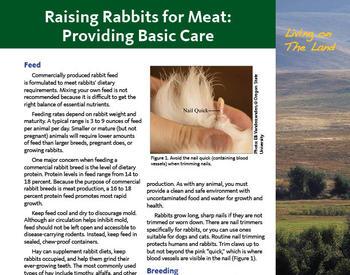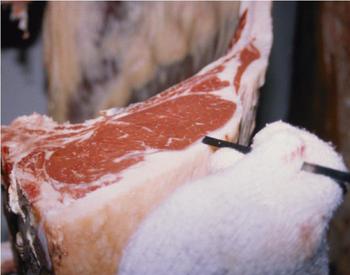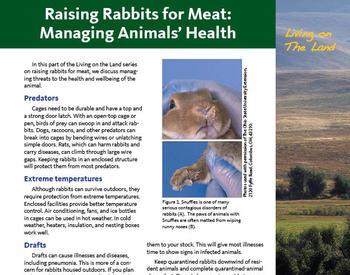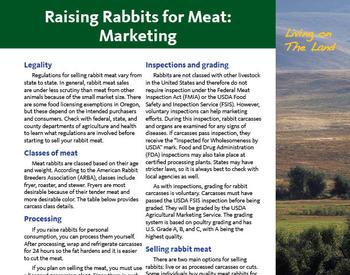NOTE: This resource is part three of an informational series. View all resources in the series.
Determining your rabbit’s genotype
In this article, we review what we've learned in parts one and two. Remember that each gene codes for a different aspect of color or patterning. You may want to download the summary table to use as a guide for working through this section.
The purpose of this exercise is to "work backwards"; we are looking at phenotypes to see if the genotype can be determined.
If a certain allele is unknown, we use an underscore "_" to note that (examples are in the C gene and E gene sections).
A gene
- If your rabbit has an agouti pattern (each individual hair has a banding pattern, belly is light), then the genotype is AA, Aat, or Aa.
- If your rabbit has a tan pattern (dark with light belly and nose, solid individual hairs), then the genotype is atat or ata. at is recessive to A but dominant to a.
- If your rabbit has a self pattern (it has neither an agouti nor tan pattern) then the genotype is aa. a is recessive to both A and at.
B gene and D gene
- If your rabbit is black based, then the genotype can be BB DD, Bb DD, BB Dd, or Bb Dd.
- If your rabbit is blue based, then the genotype can be BB dd or Bb dd.
- If your rabbit is chocolate based, then the genotype can be bb DD or bb Dd.
- If your rabbit is lilac based, then the genotype is bb dd.
C gene
- If your rabbit does not match one of the other C allele descriptions, then the genotype is likely C_. C is dominant to all of the other alleles in the C-series, so the second allele may be unknown.
- If your rabbit has white where you might expect yellow (like on banded hairs), then the genotype is cchd_. cchd is recessive to C but dominant to all of the other alleles in the C-series. If your rabbit has a chinchilla phenotype then it will also have an A_ genotype.
- If your rabbit is sable, then the genotype is cchl_. cchl is recessive to cchd and C but is dominant to all of the other alleles in the C-series.
- If your rabbit is himalayan in color pattern, then the genotype can be chch or chc.
- If your rabbit is albino (white coat and red eyes), then the genotype is cc. You will not be able to identify any of the other genotypes based off of the phenotype.
E gene
- If your rabbit is black all over, then the genotype can be Ed_. Ed is dominant to all of the other alleles in the E-series so the second allele may be unknown. Ed is rare, so if your rabbit is solid black it is more likely a normal extension (E_) with a self pattern (aa).
- If your rabbit is steel, then the genotype is likely Es_. Es is recessive to Ed but dominant to all of the other alleles in the E-series. If your rabbit has steel phenotype then it will also have an A_ genotype. (You won’t see the Es in the phenotype if the rabbit is genotype aa; it will have a self pattern.)
- If your rabbit has normal extension (i.e., not steel, not tricolored, no red/orange/fawn), then the genotype is likely E_. E is recessive to Ed and Es but dominant to ej and e.
- If your rabbit is harlequin or tricolored, then the genotype is ejej or eje.
- If your rabbit is a red/orange/fawn color, then the genotype is ee.
Spotting
- If your rabbit has no white spotting then the genotype is enen.
- If your rabbit is almost entirely white, then the genotype is likely EnEn.
- If your rabbit has white spotting all over with color on the ears, nose, eyes, and back, then the genotype is Enen.
Silvering
- If your rabbit has no silvering, then the genotype is SiSi.
- If your rabbit has silvering, then the genotype is sisi.

